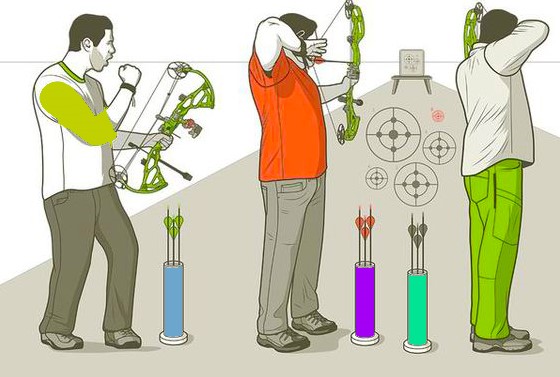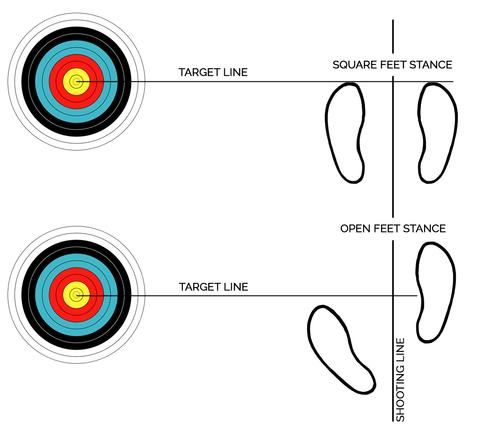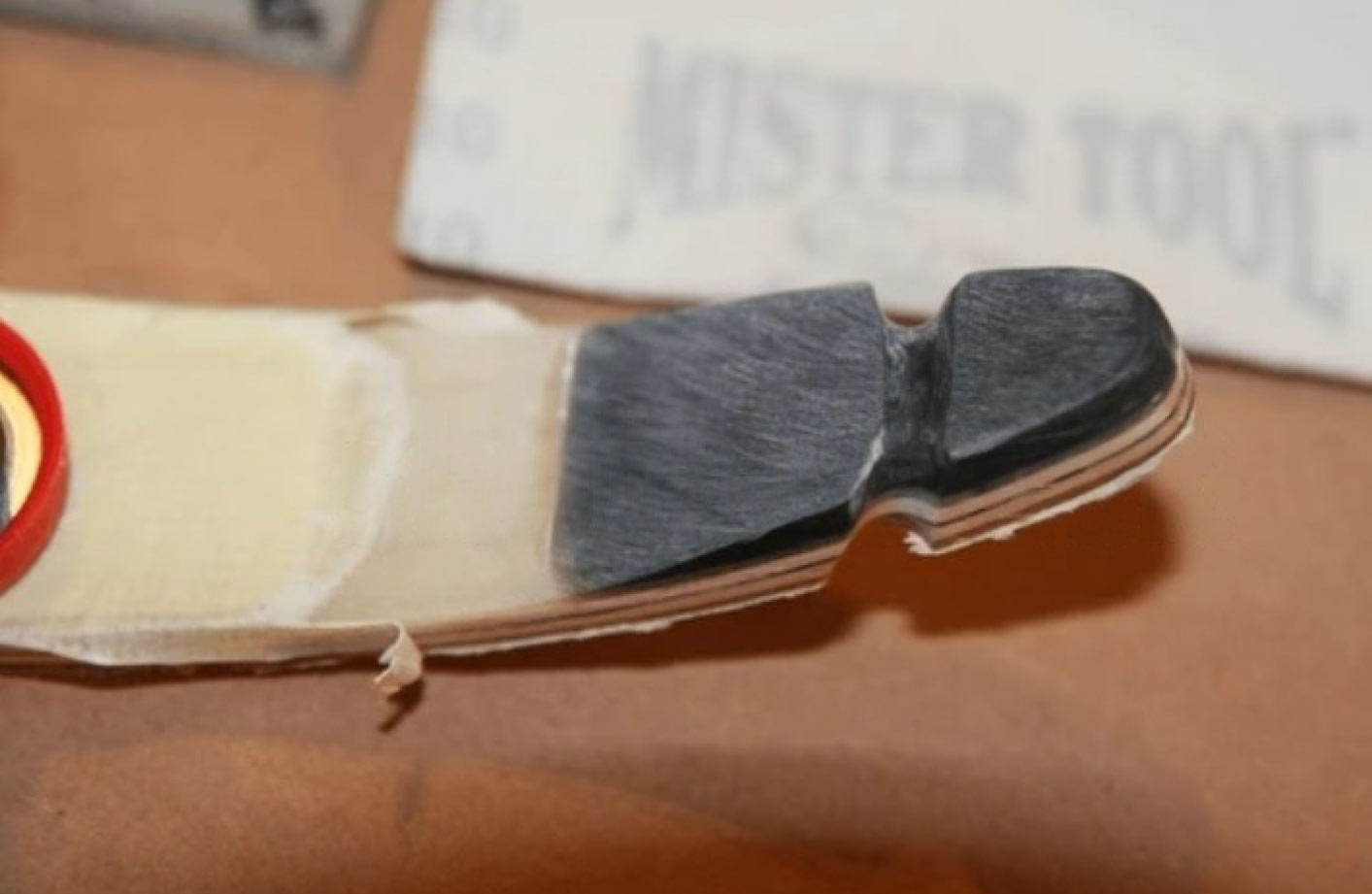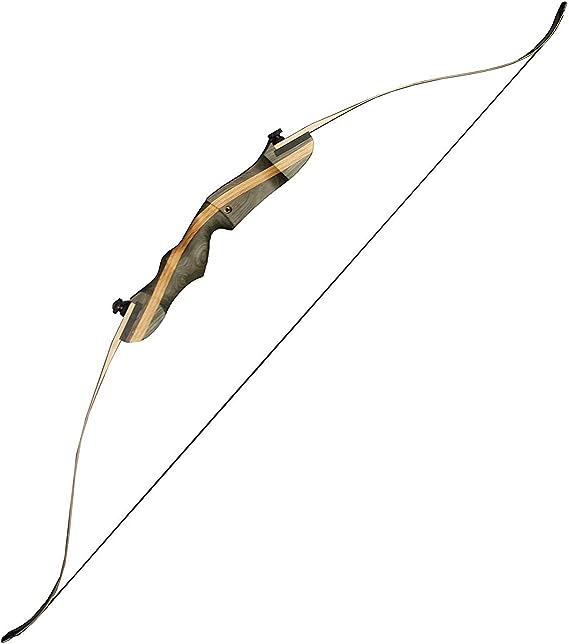An Overview of Bow Hunting tips for beginners
Bow hunting is a thrilling and challenging sport that requires skill, patience, and knowledge. If you are interested in taking up bow hunting, here are some important tips to get you started.
This blog is designed to equip you with the necessary bow hunting tips and tricks to become a successful and safe bow hunter.
We’ll start with a few basics that will help you on your journey towards becoming an expert bow hunter.

Bow Selection:
Finding the right path is essential for success, as is choosing the best recurve bow, regardless of your level of experience. The ideal bow will depend on many factors, such as draw length, arrow speed, and the power level you need.
Consider consulting an archery specialist if you are unsure what bow might be best suited for your needs. They can offer expert advice tailored to your individual preferences.
Archery Basics:
Once you have chosen your bow, it’s time to start learning the basics of archery. This can mean learning the right form and technique, finding out about the different kinds of arrows, and even trying out different target faces to see which ones work best for getting more accurate.
Bow Hunting Safety Tips:
Above all else, safety should be your top priority when it comes to bows and arrows, especially when using a recurve bow for hunting. Can you hunt with a recurve bow? Absolutely. However, before heading out, it’s crucial to follow these safety tips.
Thoroughly inspect your gear, including arrows and strings, for any signs of damage. Any compromised equipment should not be used.
Always wear appropriate protective gear, such as gloves or safety glasses, while shooting. This helps prevent any potential injuries.
Moreover, be mindful of your surroundings. Ensure there are no bystanders nearby when you’re shooting or carrying a loaded recurve bow. This minimizes the risk of accidents and keeps everyone safe.
Practice Drills:
Becoming comfortable shooting with a bow takes time; it is not something that will happen overnight! One helpful way to stay sharp is by participating in practice drills that focus on form and accuracy.
This can be done either with a target or on the range. You could also set up a 3D course with foam targets to practice your hunting skills in a realistic environment.
Shooting techniques for beginners bow hunting


Shooting techniques are crucial for accuracy and consistency in bow hunting. Here are some key techniques to keep in mind:
Anchor point: Find a consistent anchor point, like the corner of your mouth or the crease in your jaw, to make sure your arrows always go where you want them to go.
Stand with your feet shoulder-width apart and your body balanced to avoid excessive movement and to keep your shot steady.
Grip: Hold the bow handle with a relaxed grip to prevent torque and improve accuracy. Make sure your grip is firm and consistent on the bow to avoid any wobble or movement during the shot.
Draw: Slowly and steadily pull the bowstring back, keeping your elbow tucked in and your hand loose.
Aim: Focus on your target and align your bow sight or aim with the target.
Release: Use a consistent way to release the arrow, like a trigger release or a back-tension release, to make sure the arrow always goes where you want it to.
Follow-through: Hold your arm and bow still for a few seconds after you let go to keep your form.
Use these techniques often and keep working to refine and improve your form so that you can be more accurate and have more success on the field.
Tagging and field care
Tagging and field care are important considerations for ethical and responsible hunting. Here are some key tips for tagging and field care:
Tagging: Make sure you have the appropriate tags or licenses for the game you are hunting, and fill out the necessary information on the tag promptly after harvesting the animal.
Field dressing: Quickly and correctly dress the animal in the field to keep it from going bad and help keep the meat fresh.
Meat care: Cool the meat as soon as possible, either by skinning the animal and exposing it to the air or by using ice packs.
Transport: Pack the meat in a clean, cool place and transport it in a manner that prevents contamination and spoilage.
Game laws: Follow all applicable game laws and rules, such as size and bag limits, and let the right people know what you’ve caught.
Hunting methods are essential for ethical and effective hunting


Scouting: Spend some time in the area you plan to hunt to find out where the game you want to catch lives and when it moves.
Stand placement: choose stand locations wisely, taking into account wind direction, sun position, and the known habits of the game.
Controlling your scent: Use products that get rid of smells; take a shower before you go hunting; and stay away from foods and drinks with strong smells.
Calls and decoys: Use calls and decoys in the right way to attract game, but keep in mind the species you’re hunting and how they normally act.
Ethics: Always hunt in an ethical way. For example, don’t use bait, respect property rights, and don’t take high-risk shots.
Hunting often requires patience, so be ready to wait for long periods of time and pay attention to any changes in your surroundings.
Picking the Right Gear for Bow Hunting
Gear selection
One of the first decisions you’ll have to make when it comes to selecting the right gear for bow hunting is which type of bow is best for you.
You’ll want to consider a few factors, such as your experience level, the terrain types where you plan to hunt, and your budget.
Traditional bows aren’t as versatile as compound bows, which can be adjusted in more ways. But recurve bows are still popular among experienced hunters.
Bow Types
There are several types of bows to choose from, including recurve, longbow, compound, and crossbows.
The type of bow you choose will depend on your personal preference and the type of hunting you plan to do. Consider factors such as draw weight, draw length, and brace height when making your selection.
Arrow Shafts
The arrow shaft is a critical component of your hunting setup. Consider the weight and material of the arrow as well as the size and type of game you plan to hunt.
A heavier arrow will usually fly more steadily and go deeper, but it will also be slower and less forgiving of mistakes.
Accessories
Having a quiver to hold your arrows, a bow sling to help you carry your bow, and a bow case to protect it can all make bow hunting more fun.
Stabilizers
Stabilizers help reduce bow vibration and increase accuracy. Consider the weight and length of the stabilizer and the type of hunting you plan to do.
Stabilizers that are heavier can help reduce noise and vibration, while those that are lighter can make the vehicle easier to move.
Sights and scopes
Sights and scopes can help improve your accuracy when aiming at your target. When choosing a sight or scope, think about things like the type of reticle, the amount of magnification, and how easy it is to change.
Broadheads
Broadheads are the cutting tips of your arrows, and the type of broadhead you choose will depend on the type of hunting you plan to do. Consider factors such as blade configuration, cutting diameter, and weight when choosing broadheads.
Release Aids
Release aids help you release the bowstring smoothly and consistently. When choosing a release aid, you should think about things like the type of trigger, how it is activated, and your own preferences.
Forming a Solid Shooting Foundation
Are you looking to solidify your shooting foundation? Whether it’s your first time bow hunting or you’ve been doing it for a long time, you need a strong base of skills and techniques to be successful.
Here, we’ll talk about the basics, including how to practice shooting, how to aim, how to think about drawing strength, how to let go and follow through, and how to keep yourself safe.
Bow hunting techniques
The most integral part of bow hunting is having the right equipment. When setting up your bow for hunting activities such as stalking or still hunting.
It’s important to make sure the draw length matches your personal draw length, that you’ve gotten used to the feel of the bow before heading out on any hunts (especially if it’s a newer model), and that all components are securely attached.
If you just bought a new bow, head to an archery range and practice with it before bringing it outside!
Fundamentals
When learning how to shoot, it’s important to know how to hold the bow correctly: keep your arms together but relaxed, your body straight, your legs slightly bent at hip and knee level, and your feet firmly placed shoulder width apart.
Take your time when aiming. Start by looking through your peep sight, and then continue down to find your anchor point before releasing.
This process helps ensure accuracy, so take all necessary steps before letting go of the arrow.
Practice Shooting
Setting up a consistent practice session should be a top priority for anyone wanting to make strides in their archery knowledge.
Working on different targets from various angles promotes structural development in both physical endurance and confidence when releasing arrows in the game.
As time goes on, controlling muscles during prerelease will become more routine, and accuracy will increase.
Lastly, practice shooting with the same kind of arrows you’ll be using when hunting so you can get used to how they fly.
Draw Strength
Your draw strength refers to the amount of force you can apply to the bowstring when drawing it back. Make sure you have a bow with a draw weight that is suitable for your abilities, and gradually increase the draw weight as you build strength.
There are different ways to aim when shooting a bow, such as using your dominant eye, using a spotter, or using a bow-mounted sight.
Choose a strategy that works for you and practice it consistently to improve your accuracy.
Release and Follow-Through
The release and follow-through are important parts of shooting a bow accurately. Make sure you have a consistent release technique and follow through by holding your bow arm steady and observing the arrow’s flight.
Understanding the Effects of Wind and Weather on Your Shots
Wind Direction
When planning a bow-hunting adventure, it’s important to pay attention to the wind direction.
Wind direction can cause your arrows to veer off course rather quickly, which requires you to make corrections during each shot. Paying attention to local weather forecasts will allow you to plan accordingly.
Weather Conditions
Since bowhunting is done outdoors, it’s important to know what kind of weather conditions you’ll be dealing with on any given day.
Factors such as humidity, temperature changes, and barometric pressure can all contribute to the accuracy of your shots.
High humidity can slow down an arrow because water vapor in the air creates more drag, and low temperatures can slow down an arrow because the air is denser.
Changes in barometric pressure can also change the path of an arrow by increasing air resistance or changing how the arrow spins after it leaves the bowstring.
Arrow Flight Path
Understanding the flight path of arrows is key to successful hunting trips. Usually, arrows travel in a straight line for about 20 yards before they are pulled down toward their target or in a random direction if they are not shot correctly.
When shooting arrows, it’s critical to consider outdoor factors such as wind direction so that they land exactly where they’re supposed to! Remote sensing technology like GPS tracking can also help you figure out where your arrow is going by giving you information about its path in real-time.
Outdoor Factors
Outdoor factors such as trees, hills, and other obstacles can also affect the flight path of your arrows. Consider these factors when selecting your shot and make adjustments as needed.
Remote Sensing Technology
Advanced remote sensing technology, such as wind meters and weather sensors, can help you better understand the effects of wind and weather on your shot. Consider using this technology to make more accurate shots.
Trajectory Corrections
It takes practice and experience to know how to correct wind drift and other things that affect how your arrows fly. Consider working with a coach or mentor to develop your skills in trajectory correction.
How to Fix Wind Drift
Wind drift can make a big difference in where your arrows go, especially at long distances. Make sure you understand how to correct wind drift and adjust your shot accordingly.
Timing of shots
Wind and weather conditions can also affect the timing of your shot. Consider timing your shot when conditions are calm and stable to improve your accuracy.
Scouting for game and preparing for a hunt
Scouting for game and setting up for the hunt are both essential steps in the bowhunting process. When scouting for game, look for signs such as tracks, droppings, and rubs that indicate which animals are present in the area.
Once you have identified the area, take into consideration factors like wind direction, terrain, and cover when setting up for the hunt.
This will help ensure that you are in the best position for a successful hunt. Also, make sure to practice shooting from different distances and angles so you’re ready when the time comes.
Scouting:
Finding the right location to hunt is crucial, so it’s important to dedicate time to scouting before you set up. Make sure to look for areas that have plenty of animal activity and keep an eye out for signs such as tracks, droppings, bedding spots, and food sources. Seeing animals in their natural environment will also give you a better idea of how they move.
Find locations
Once you’ve identified a potential hunting spot, take time to explore the area and look for locations that offer good cover, visibility, and shooting ranges. Look for trees or elevated perches that you can use as a stand.
Make sure to practice shooting from different angles and distances so you’re prepared when the moment arrives.
Examine animal movement patterns
Animals tend to move in predictable patterns, so it’s important to keep track of their movements.
Look for signs such as tracks, trails, and rubble and observe how they move in the area. This will help you determine where they are likely to be and when they are most active.
Examine the weather forecast.
Finally, make sure to check the weather conditions before you head out. Wind, rain, and snow can all affect how animals move and behave, so it’s important to be prepared. Make sure to pack the necessary clothing and gear to keep you protected from the elements.
Wind Direction
Wind direction is an important factor when setting up for a hunt. Make sure to position yourself so the wind is blowing away from the animals you’re hunting; otherwise, your scent will travel to them and alert them of your presence.
Terrain
When scouting a location, take into account the terrain and cover of the area. Open areas with plenty of visibility and good shooting ranges are ideal spots for bow hunting, as they increase your chances of taking down a trophy.
Cover
When planning your setup, look for trees or elevated perches that you can use as stands. Covering your movements will help to conceal them and break up your silhouette.
Also, wear camouflage clothes that are right for the environment to make it less likely that the game will see you.
Check wind direction and scent control.
Wind direction is an important factor when setting up for a hunt. Make sure to position yourself so the wind is blowing away from the animals you’re hunting; otherwise, your scent will travel to them and alert them of your presence.
Use sprays that get rid of odors or other ways to hide your scent to make it less likely that an animal will find you. Be aware of your surroundings.
Setting Up
Once you’ve identified a good spot, setting up your tree stand or ground blind is the next step. Make sure that all of your gear is scent-free, as animals are incredibly sensitive to smells.
Finally, bear in mind the terrain features when selecting a stand or blind; consider how much cover there is from shrubs or trees, and take advantage of any obstacles that may offer extra concealment from wildlife.
Becoming a Better Hunter with Tips from Bow Hunting Professionals
Professional Advice
Seeking advice from experienced hunters is a great way to learn the ropes. Learn effective techniques that have been field-tested over time, like waiting patiently in tree stands or ground blinds for game or stalking animals without disturbing them with sound or scent.
Your mentors can also provide advice on proper animal care, such as field dressing and appropriate butchering procedures following a successful hunt.
Target Practice
One key tip from the pros is that target practice should be part of your routine before heading out onto the field.
This will assist you in developing muscle memory and accuracy with your equipment so that when the time comes to shoot at a game, effectiveness will not be an issue due to a lack of practice.
Range estimation and windage
Once you’ve selected the proper equipment, mastering advanced techniques in archery requires an understanding of range estimation and windage.
Knowing how to accurately estimate the distance between you and your target is essential for making sure your arrows reach their mark.
Mental concentration techniques
Mastering advanced techniques in archery requires an understanding of mental focus strategies. Archery is a sport that not only requires physical skill but mental discipline as well.
Learning to control your breathing and focus on the task at hand can make a world of difference when it comes to building confidence in your shooting.
By mastering the basics of archery, understanding the importance of proper equipment selection and maintenance, learning range estimation and windage techniques, and developing mental focus strategies, you’ll be well on your way to mastering advanced techniques in archery.
With the right discipline and practice, you can become a skilled archer and make sure your hunt is successful.
Conclusion
Bow hunting requires a combination of skill, knowledge, and gear to be successful. To become a proficient bow hunter, it is important to start with the basics, including proper shooting techniques, hunting strategies, and gear selection.
By mastering advanced techniques, such as advanced archery form tips, arrow selection, and shot timing, you can increase your chances of making a successful shot in the field.
With time, patience, and practice, anyone can become a successful bow hunter and enjoy the thrill of the hunt.




